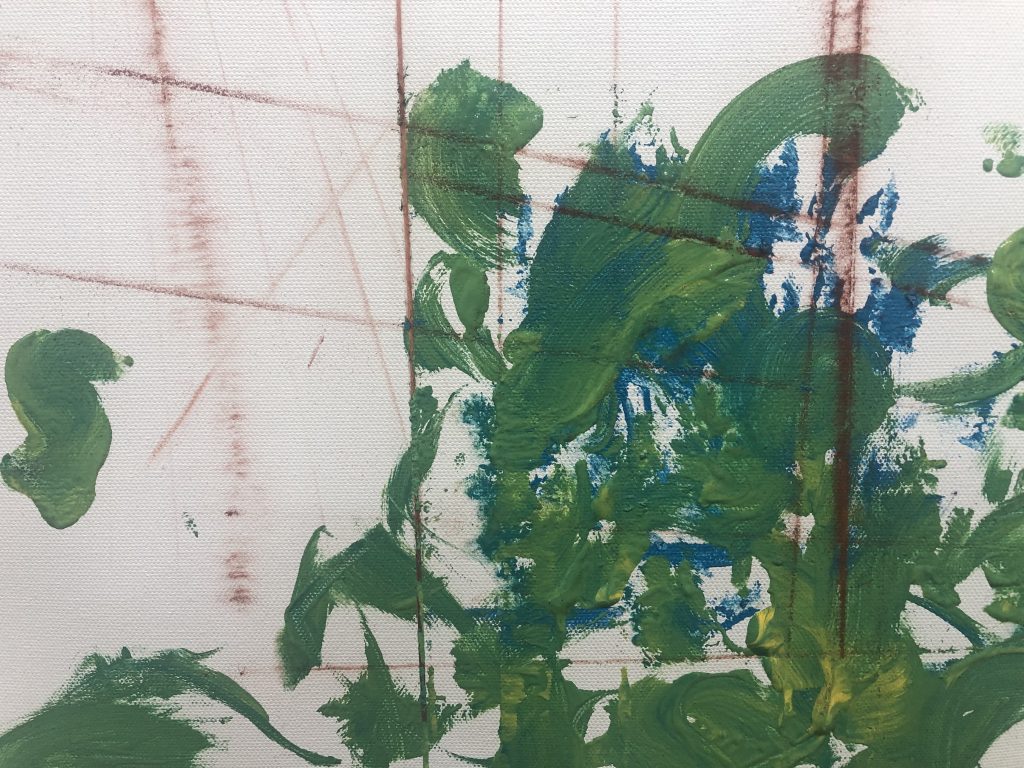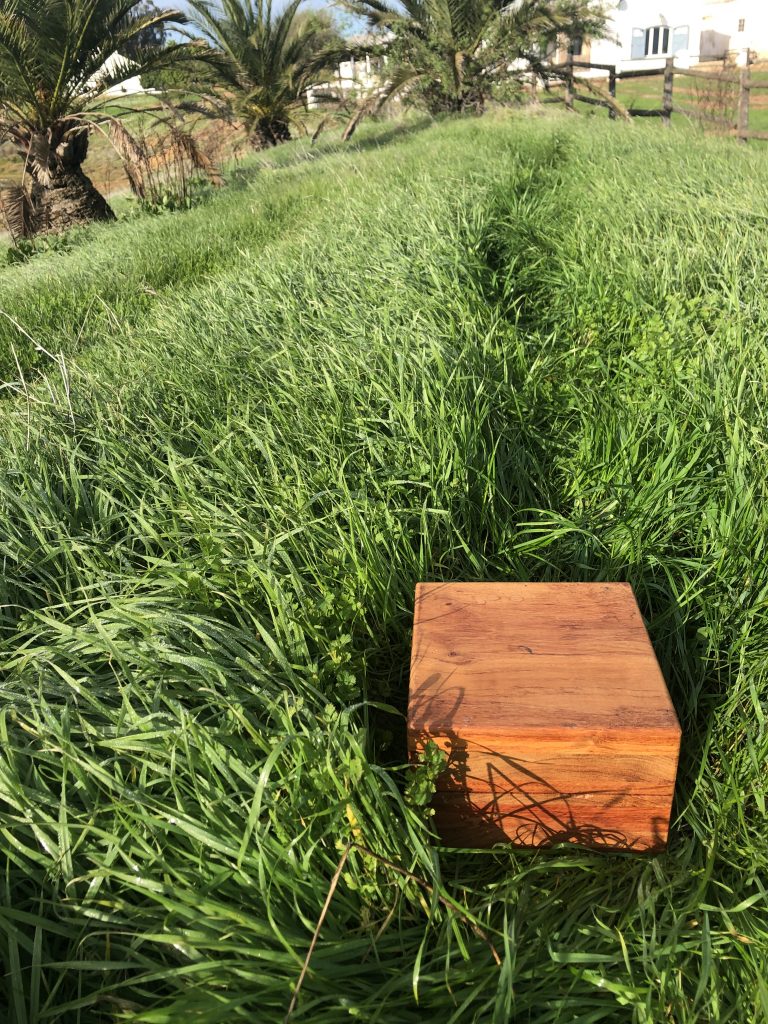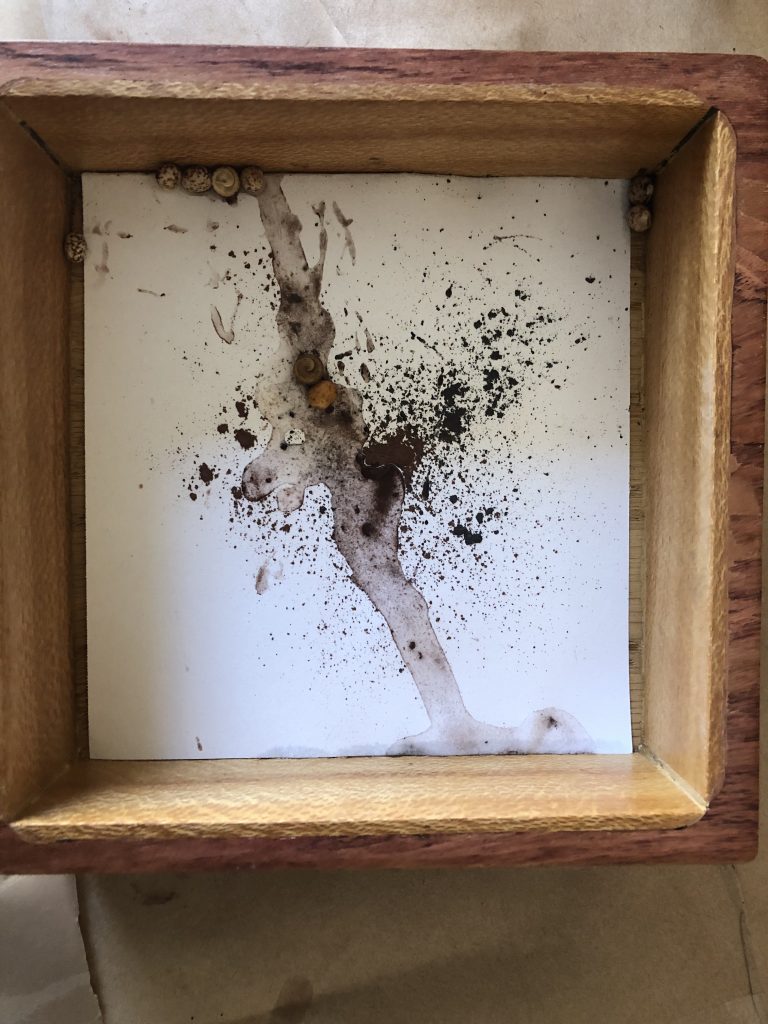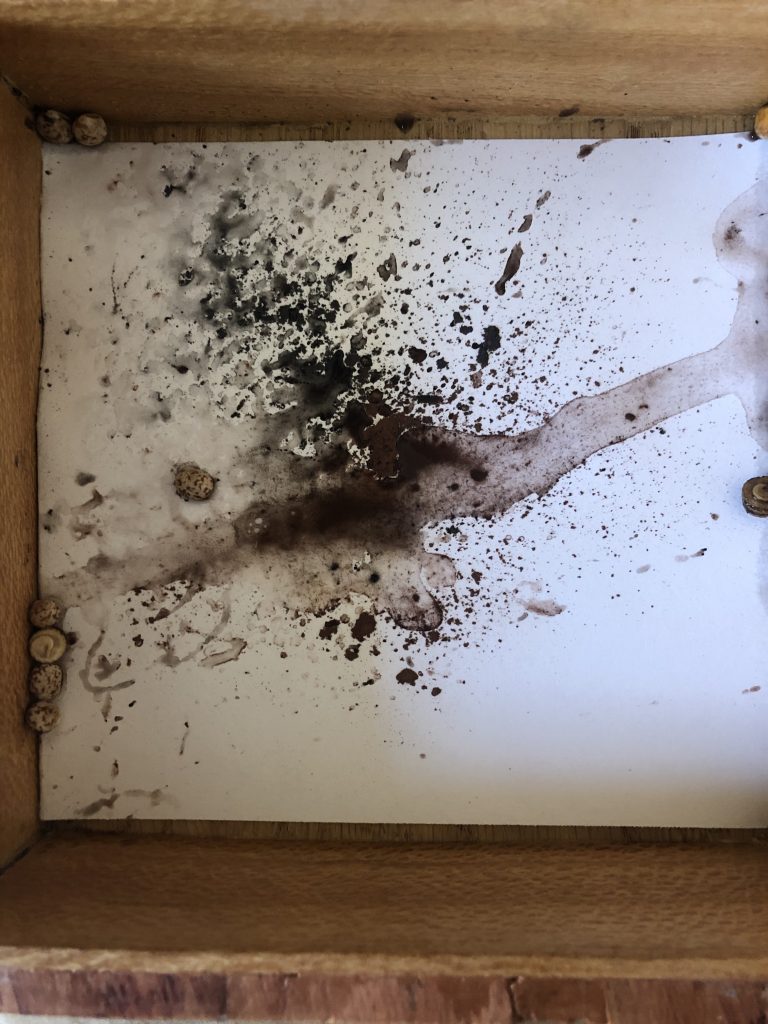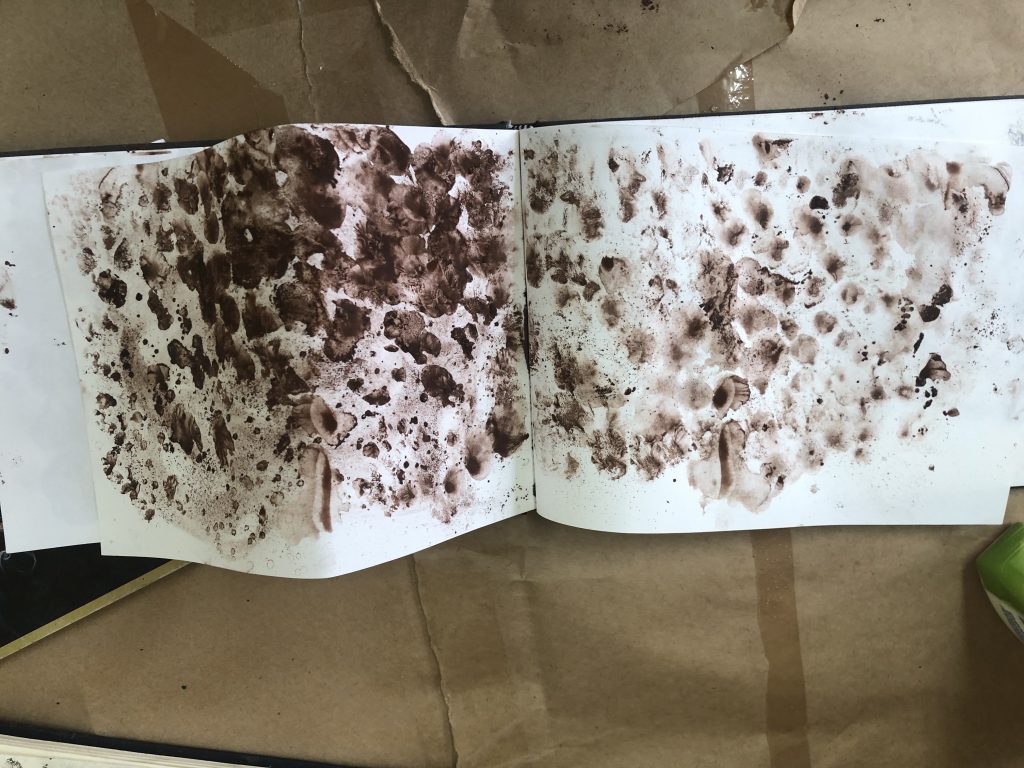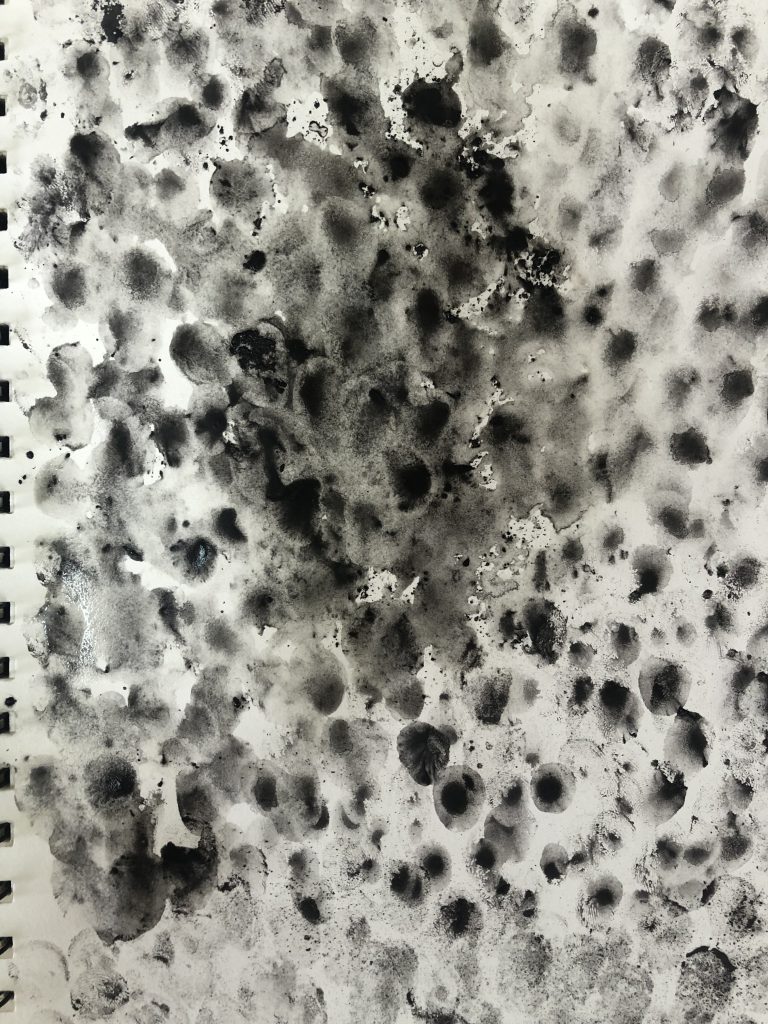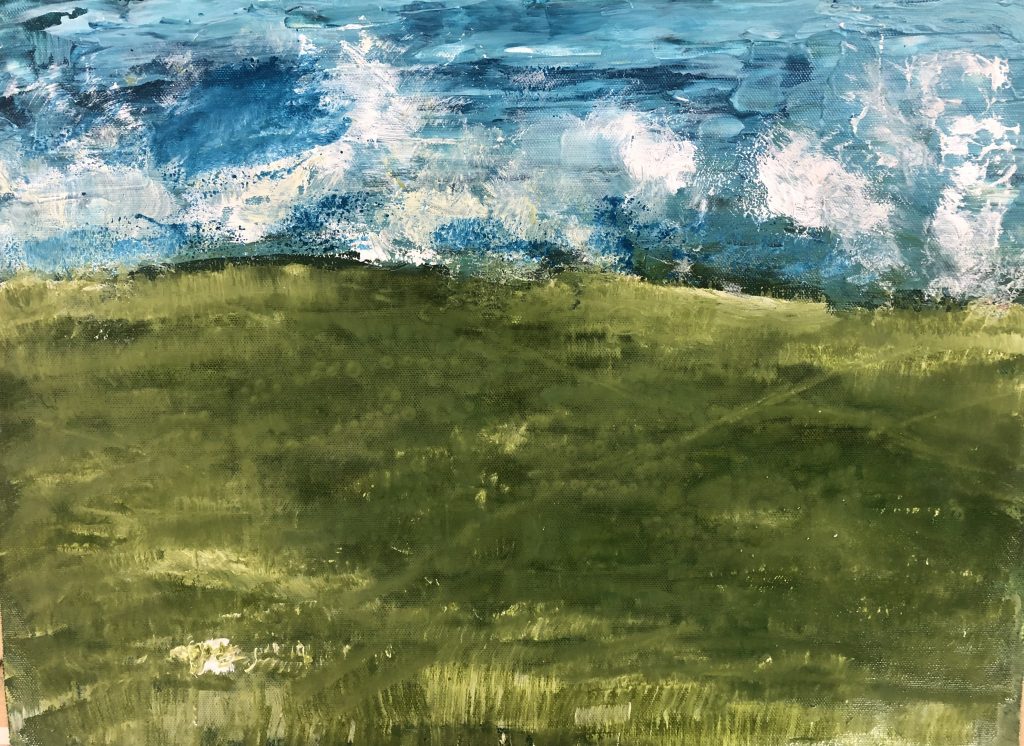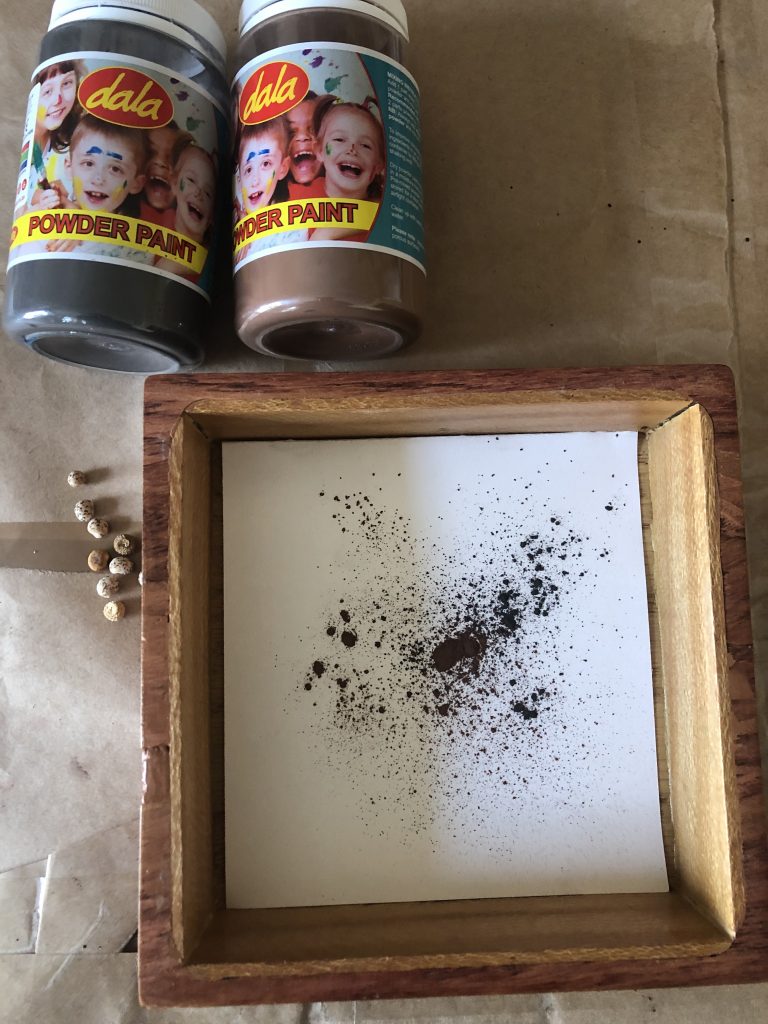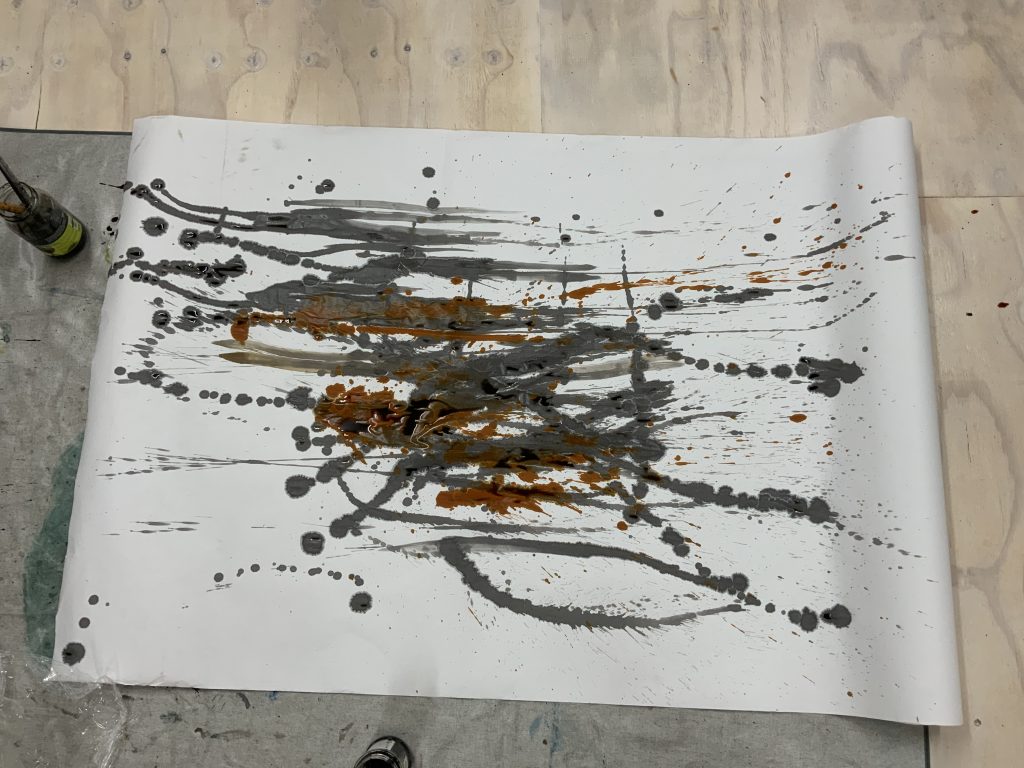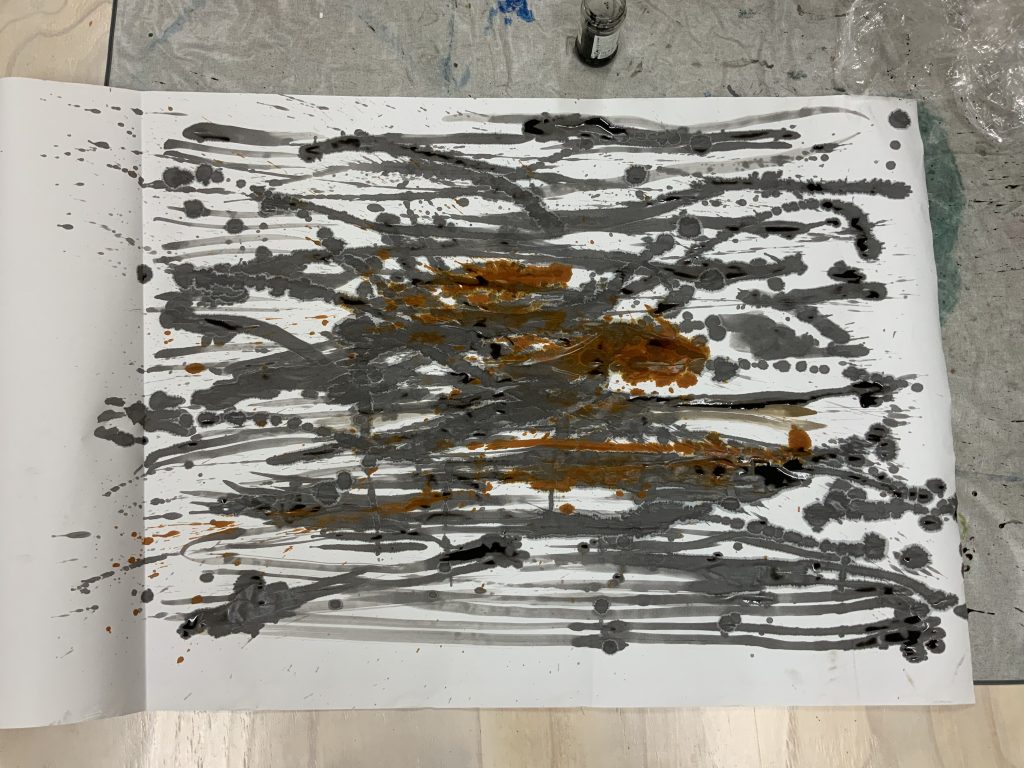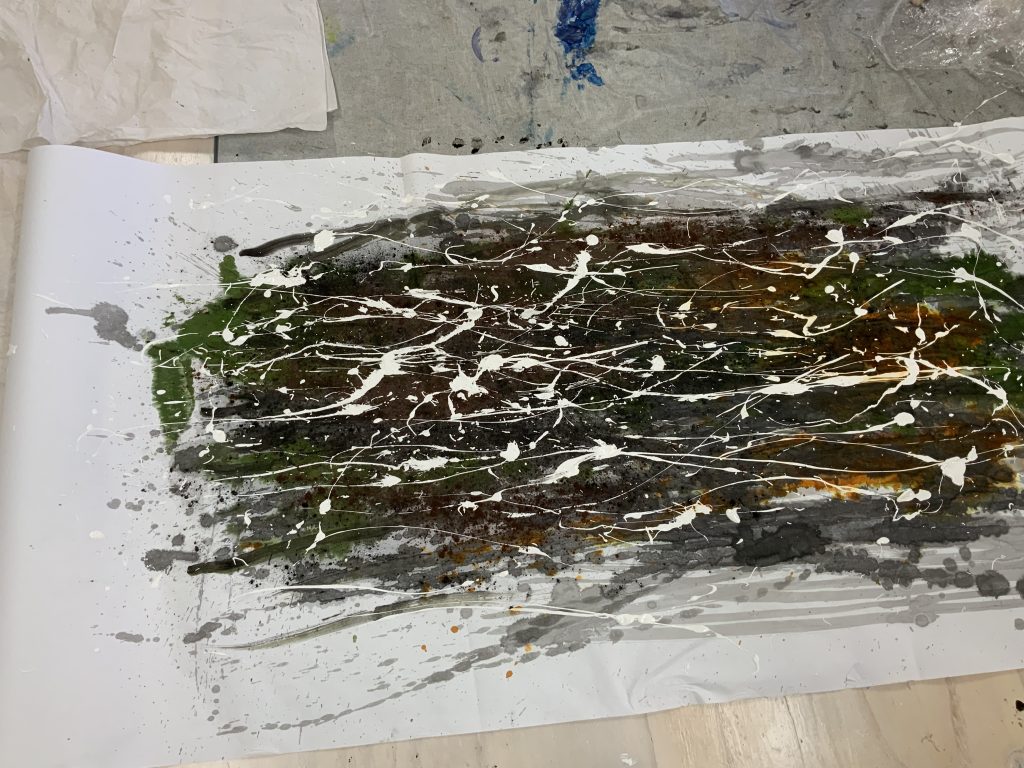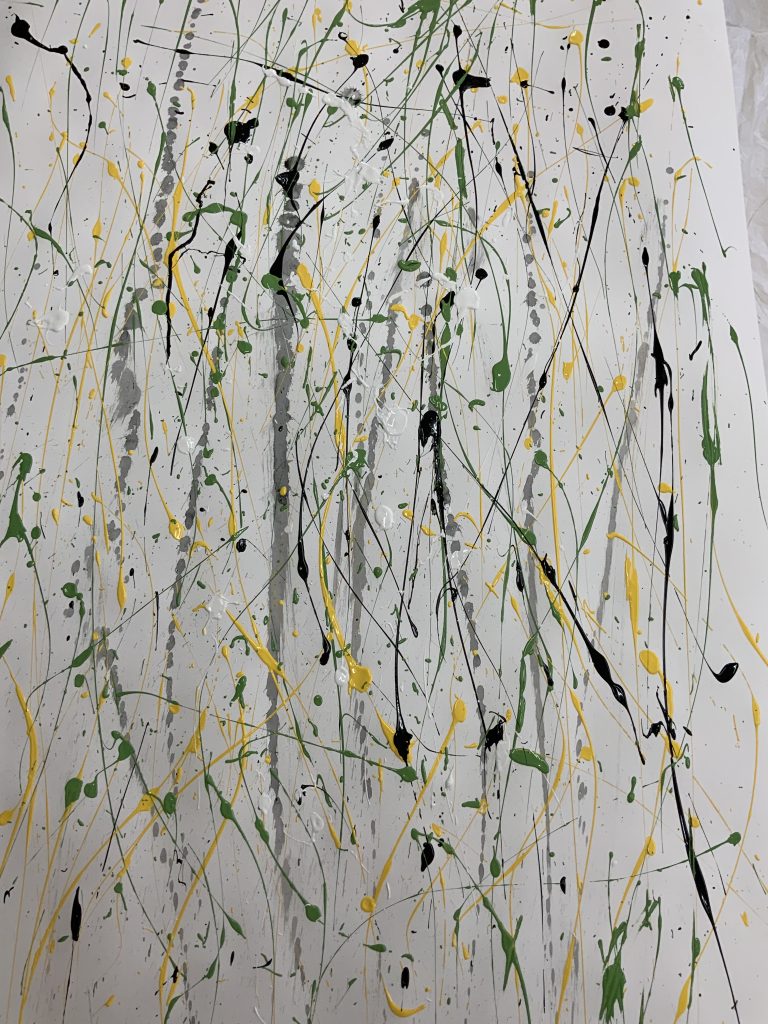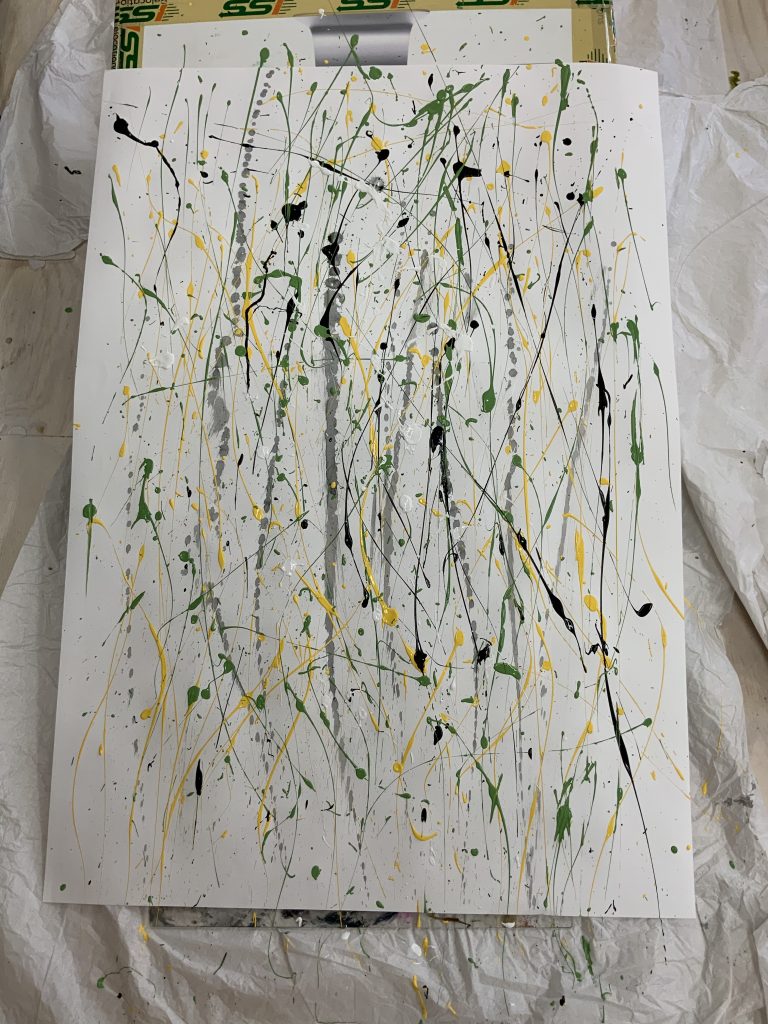“Technique is just a means of arriving at a statement.” J Pollock
Exercise 1.1 Painting without the brush
Below is a video that is part of a series of Live Drawing Performances which started in 2013 and developed as an international community that takes place in many locations over the world.
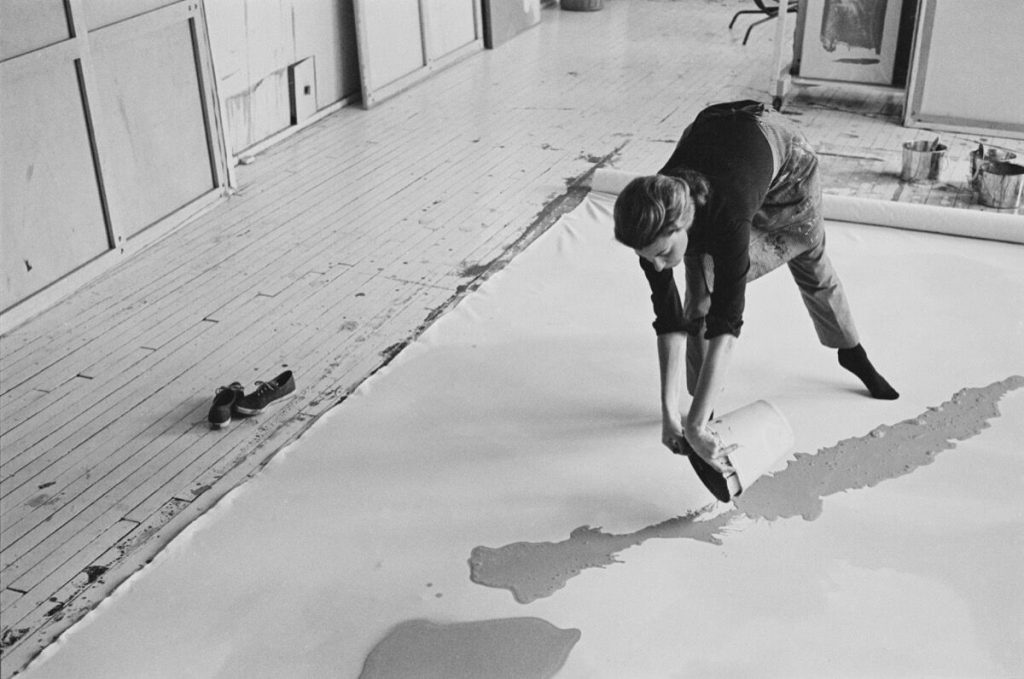
American abstract expressionist painter Helen Frankenthaler (1928 – 2011) at work on a large canvas, 1969. (Photo by Ernst Haas/Ernst Haas/Getty Images) 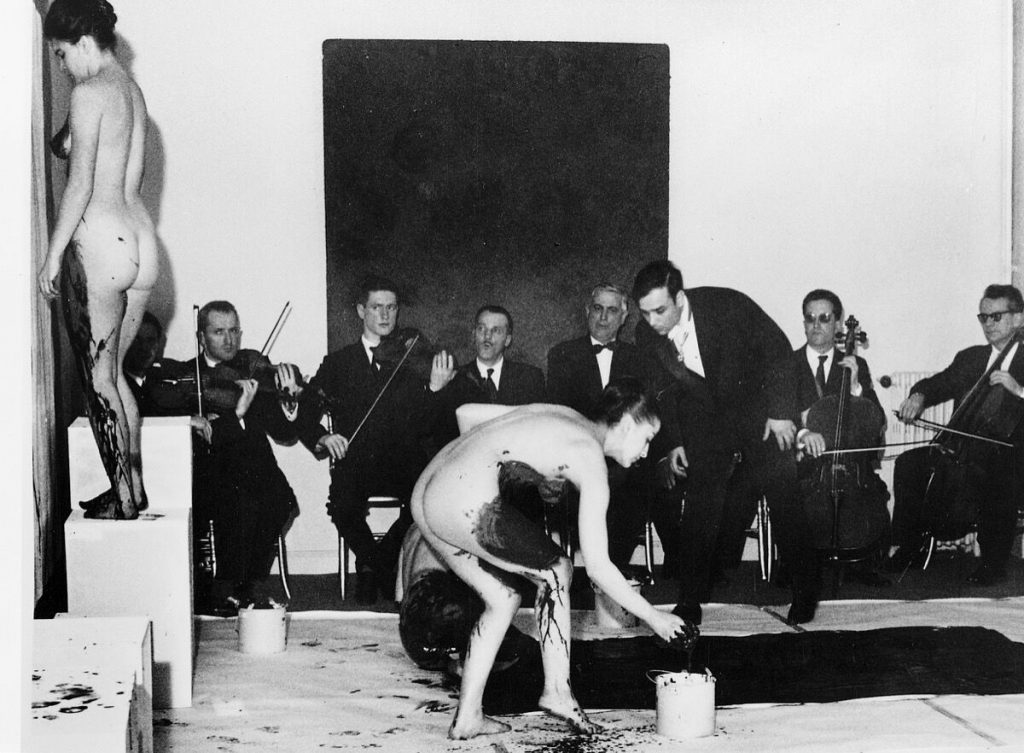
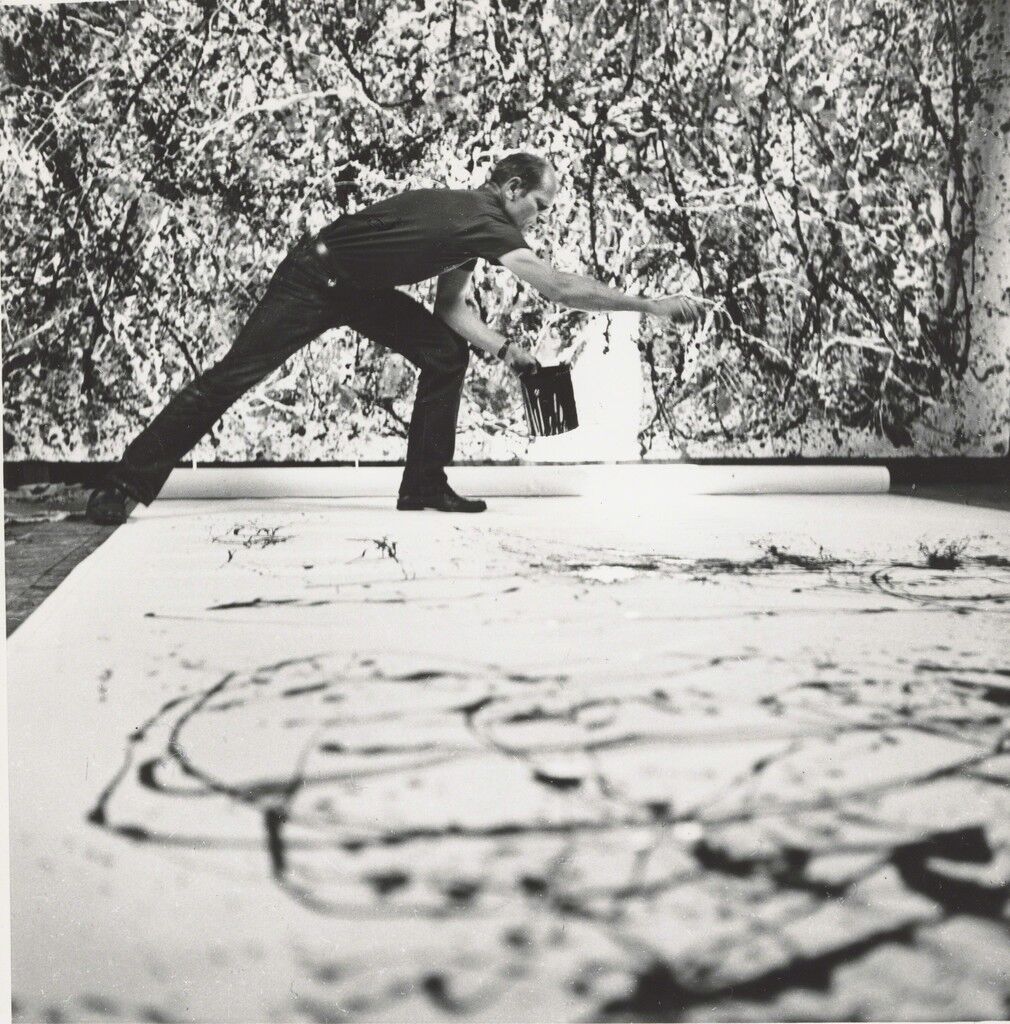
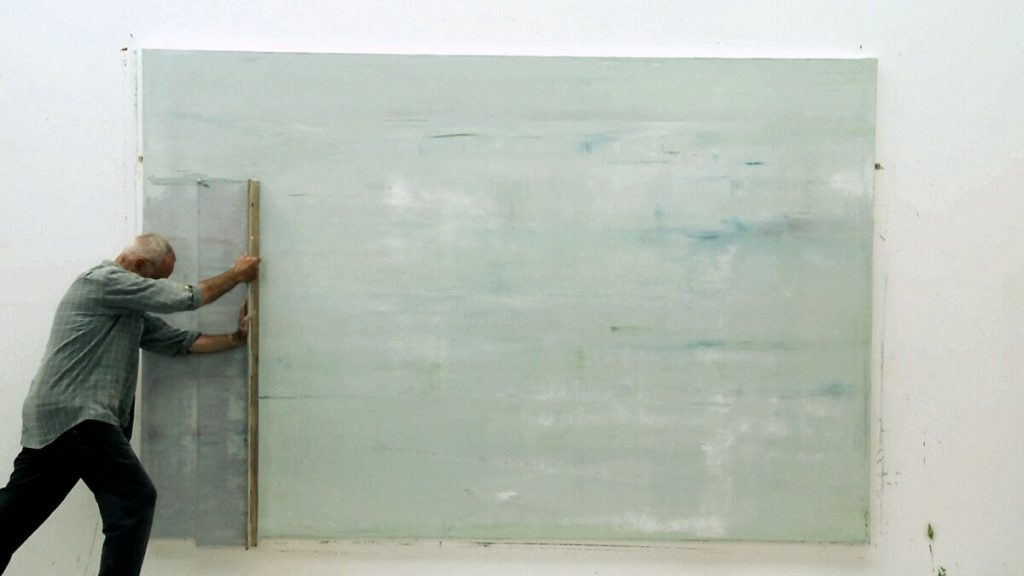

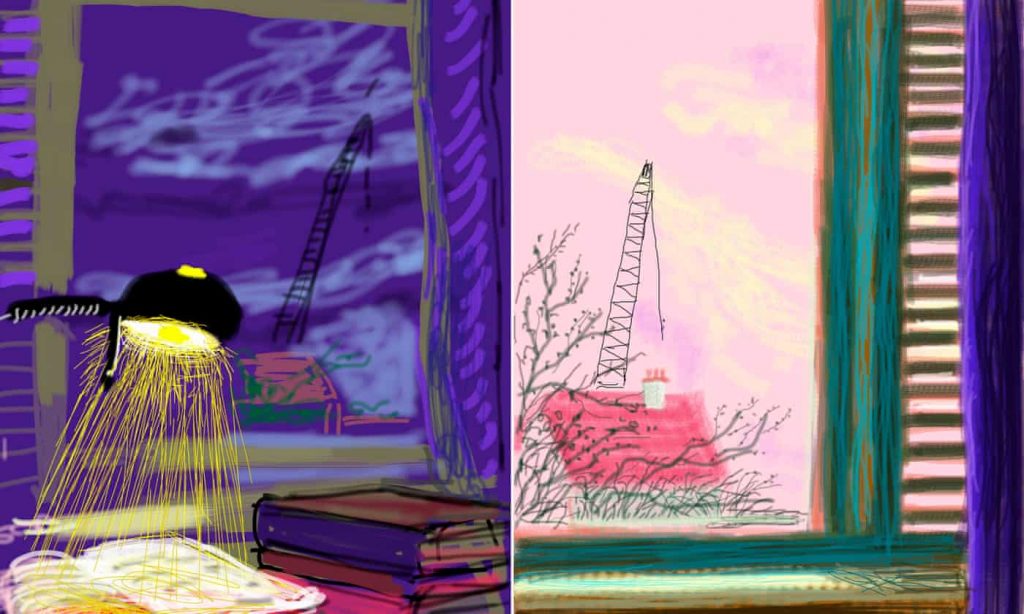
Preparation for the exercise
I wanted to critically look at the word, PERFORM(ance/ative), and it is clear it derived from the verb, perform, with a noun action which indicates something being presented, an act, an execution. Then look at Performance Art: (a noun)
“a collaborative art form originating in the 1970s as a fusion of several artistic media, like painting, film, video, music, drama, and dance, and deriving in part from the 1960s performance happenings.” (Dictionary.com)
I also ask myself if it is opening up ideas about the fascination with materiality and control over actions? Pollock clearly challenged ideas about composition and form with his work. (Kaprow, 1958). The following words in Kaprow’s essay are important for me to consider within this exercise: “….. a type of art which tends to lose itself out of bounds, tends to fill our world with itself, an art which, in meaning, looks, impulse, seems to break fairly sharply with the traditions of painters back to at least the Greeks. Pollock’s near destruction of this tradition may well be a return to the point where art was more actively involved in ritual, magic and life than we have known it in our recent past.” I consider the idea as being open the everything around us, as well as about us – awareness and how one explores that artistically. I believe we are all drawing on the experiments of artists – I find great learning.
I also ask about privileging of ideas of art as a process, which seems to me to be a big part of the thinking during this course as well as UVC2 I recently completed. In this question, I consider a developing relationship between the body and the material and how performances can flow out of this. Do I consider feminism within Pollock’s work as there is a reference to female artists who challenged male dominance in this ‘territory’? I consider this in the research question (2).
What do I associate with performance?
- choreography is considered
- repetition as it can be replicated at another place and time
- can be copied/replicated by other performers over time
- it is resistant to notions of permanence
- selective choices are considered – curated
- actions like movement, dance, talking, or music-making – all bodily represented contains the meaning of the work
The TATE SHOTS video which the study material refers to work discussed by the curator who looks at works of art since 1950 which shows over history a dynamic relationship between performance and painting. It seems that if one looks back to this movement of performance as an attack on painting, one realizes that paint and canvas are still relevant, even after painting was declared dead. Works of David Hockney, Jackson Pollock, Eleanor Antin, Yves Klein are shown in the video and one has a visual experience of how artists used performance.
Janine Antoni claimed the space of the gallery during her performance, (which looks like mopping)of painting the gallery floor with her head covered in black hair dye. (Loving Care, 1993) It seemed her work became famous as a series of black and white photographs which documented the performance (much like Hans Namuth filming of J Pollock working) In an archived article of the New York Times I read the following:
“SLIM AND AGILE IN A BLACK BODYSUIT, Janine Antoni crouches down and dips her long black hair into a bucket filled with Loving Care hair dye. Squeezing off the excess, she drapes her dye-soaked hair on the floor and slowly swings her head from side to side, leaving sweeping S-tracks distinctly reminiscent of giant expressionist brush strokes. As she methodically covers the floor, she forces the audience out of the room. Is it mopping or painting?” and later: “Ms. Antoni’s “pigment” is the same semipermanent hair coloring that her mother uses to cover gray. And the work itself is Ms. Antoni’s rumination on the feminist performance art of the 1970’s, which explored the body in order to bring abstract issues home.“
I am thinking of the body as a tool(means for the performance/art) when I look at the images and it reminds me of feminist works, but something is also very primal and performative in the movements. I also wonder if she is dealing with her own feelings of identity and rejection – she refers in the lecture (2018) to her childhood memory of her mom telling her to go play outside whilst her mom cleaned the floor. Is her intention with performance to bring the viewer ‘back to the making’ and ‘confront ‘ the viewer with everyday experiences as inward happenings?
What does it say about female domesticity and Abstract Painting – is she linking her bodily action to that of other artists who use actions to paint? (Y Klein (used nude bodies of women to paint with) and J Pollock ( bodily actions to get closer to his work)? I presume that the hair dye refers to paint and her hair to a brush and consider if the mopping could be a critique of the history of painting, mostly men did paintings of women. male genius?), and the repetitive tasks mostly women traditionally did. Do I also see work – a process in this – a way of documenting? The photographs became iconographs- to enter the work after the first performance, viewers have to visualize her performance. The mark-making on the floor – is that considered as art? Did they clean up the floor after the performance? I think it is important that she did not perform nude- the pose/gesture not necessarily sexualized (?) I feel there are connections with the works of Sherrie Levine, Merle L Ukeles, Cindy Sherman, and Marina Abramovic in terms of body politics and how she uses performance. Looking at her work, this artist has worked with soap and chocolate – almost self-destructive materials, but also playing on frailty and erotism?
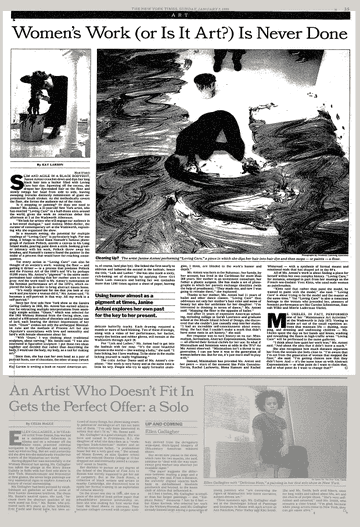
I have limited paint materials to work with for this part, and will work within these constrictions. I consider spray paint, ink, a pallet knife, my body, use of gravity around fluidity, and viscosity of the medium and ground I am working on (paper, canvas..) I look at the work of Cy Twombly – semiotician Roland Barthes suggested in his 1976 essay “Non Multa Sed Multum” that the viewer should analyze not what is being written, but how. The process gets privileged. (look at the battle of Lepanto a series (2001) of 12 works that depict the 1571 Battle ofLepanto in the Museum Brandhhorst) Shades of yellow, red, turquoise, and aquamarine.
Does this mean one should focus on the gesture to create, and not trying to decipher/understand/search for meanings in the written words or marks or the work as a whole? (Barthes, 1976:158) I remember reading that Cezanne in his drawing and using mark-making as a language – like his use of dense scribbles to indicate shadow, and using loops and spirals for foliage, and to suggest the many possibilities of line he used fragmented strokes in place of a single contour. In my case, I need to find my own language, and working without a brush and focussing on gestures I found a way to think about how I use the material. I am also aware of the act of repetitive making and the importance of keeping my practice ‘alive’ with these ideas. I cannot help but also comment on energy in these works – sometimes I see it as raw.
During the making my concerns were with the size and that I should upscale the works – I loved the freedom of moving around and getting my hands dirty in the process. I realize that by drawing or painting on a large scale one has to make large gestures, and there is an opportunity to explore materials freer. I valued my new space – I have a dedicated room/area which I can use as I want – hopefully, this is nudging me towards flow and experimenting, and considering work with ephemeral materials?
My different experiments
I moved to bigger paper, now working directly on the floor, first with ink and pigment powder and with a stick to add paint in big gestural motions. The layering became like a weaving motion as the different layers interacted and energy of these gestural actions formed part of the history of the making. Using household paints as the layer of white was applied was asking more energy. I decide to continue to develop this painting over a few days – to let the marks settle and the thin paper dry. Accidental drips become intwined in this making.
I wanted to test gravity and placed paper onto my old computer box to get an incline. I continued splashes and drip painting with my stick. I worked with acrylic paint. Smaller gestures gave the impression of the young wheat grain in the veld here on the farm.
List of illustrations
Digital action painting 2 Ink wash painting from Shuhei Matsuyama on Vimeo.
Image1
Vimeo
Bibliography
Barthes, Roland
Shimamotos, Shozo, 2015. Theory of the Curse of the Brush ed Lange-Berndt, Petra, Materiality, Documents of ContemporaryArt, London p. 65-66 as pdf Link 9 in study material. (accessed on 8 June 2021)
Kaprow, Allan, 1958 “The Legacy of Jackson Pollock”
Larson, Kay, 1996, ART;Women’s Work (or Is It Art?) Is Never Done ,The New York Times Print archive, January 7, 1996, Section 2, Page 35
Bordercrssingsmag.com. `The Beautiful Trap: Janine Antoni’s Body Art, Issue 113, March 2010. Accessed on 12 June 2021.
I also looked at video footage of The International Drawing Performance Symposium
